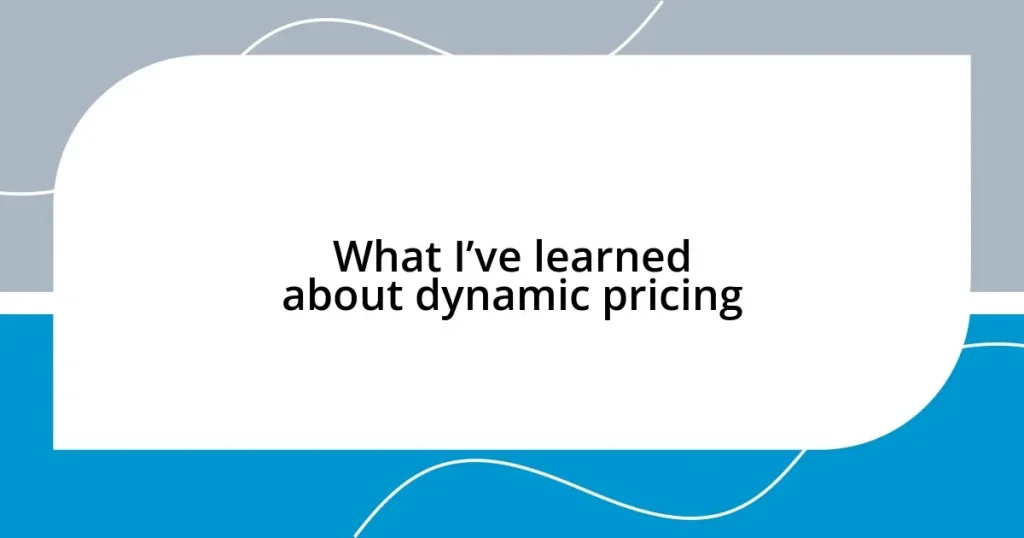Key takeaways:
- Dynamic pricing adjusts in real-time based on market conditions, affecting consumer purchasing behaviors and emotions, often causing urgency and anxiety.
- Key factors influencing dynamic pricing include demand fluctuations, competitor pricing, consumer behavior, inventory levels, and market trends.
- Effective tools for implementing dynamic pricing involve data analytics, competitor monitoring, and revenue management software that enhance decision-making and profitability.
- Best practices for dynamic pricing emphasize transparency, continuous monitoring of results, and experimentation with different pricing strategies to align with customer preferences.
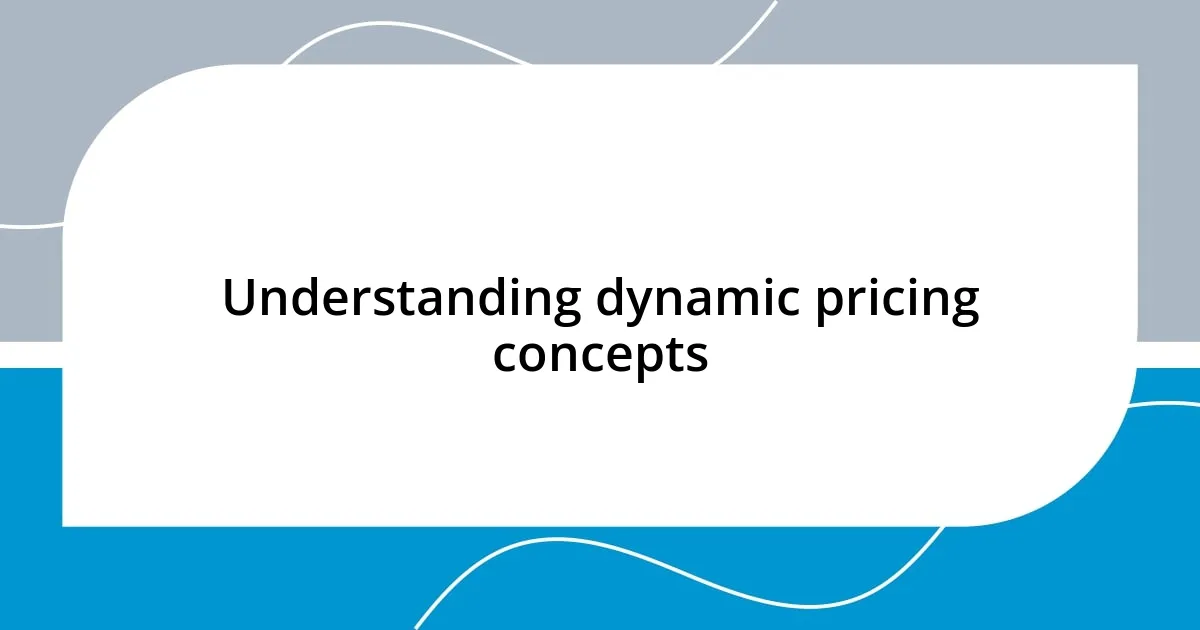
Understanding dynamic pricing concepts
Dynamic pricing is a fascinating concept that reshapes how businesses think about pricing strategies. I remember when I first encountered it while booking a hotel last summer. The price fluctuated based on demand, and I thought, “Wow, this is why I should have booked earlier!” It’s all about adjusting prices in real-time to reflect market conditions—an approach that can feel a bit unsettling but ultimately makes a lot of sense.
The emotional impact of dynamic pricing can be significant for consumers. Have you ever felt a rush of anxiety as you debated whether to buy something because the price just went up? It’s almost like a game, where you’re trying to outsmart the system. I’ve had moments where I missed out on a great deal simply because I hesitated, which led me to learn the importance of timing and awareness in this dynamic landscape.
Understanding these pricing concepts can also clarify why businesses adopt them. For instance, I’ve chatted with business owners who utilize data analytics to predict customer behavior. They told me how they can adjust their prices instantly, maximizing profits while still attracting customers. Isn’t it amazing how technology can create such a powerful impact on everyday transactions? It forces us to rethink our purchasing habits and our relationship with pricing itself.
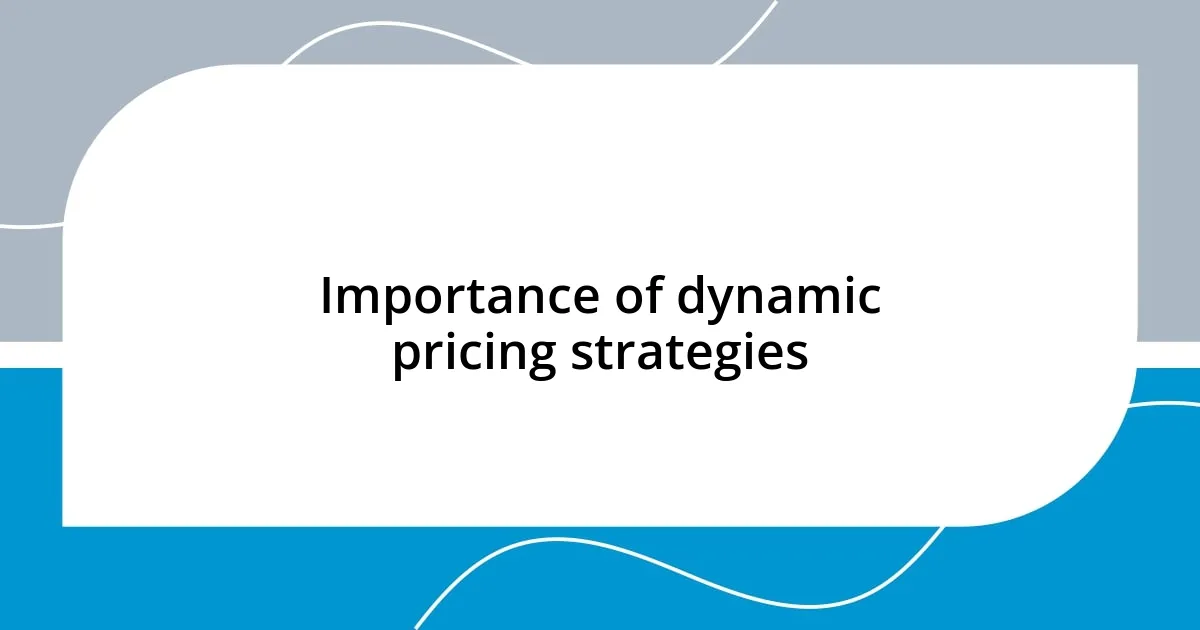
Importance of dynamic pricing strategies
Dynamic pricing strategies are essential in today’s fast-paced market. I recall attending a conference where an industry expert passionately discussed how airlines utilize this approach. The method not only enables businesses to enhance their revenue but also provides consumers with options tailored to their willingness to pay. This flexibility can create a sense of fairness for customers who are willing to be patient or search for the best moment to book.
As a frequent traveler, I’ve noticed that dynamic pricing often rewards those who plan ahead. For instance, I once monitored flight prices for weeks, and when I found a sudden drop, my heart raced with excitement. This experience reinforced the notion that timing is crucial; being aware of price changes can lead to significant savings and contributes to an engaging customer experience.
Moreover, dynamic pricing strategies drive competition in the market. I remember chatting with a friend who manages an online retail store. She explained how real-time adjustments to prices allow her to stay competitive and attract customers who may be swayed by ongoing promotions. To her, it was both a challenge and an opportunity—a balancing act of measuring demand and staying relevant amid shifting consumer preferences.
| Aspect | Dynamic Pricing |
|---|---|
| Benefits | Increased revenue, personalized customer experience |
| Challenges | Price perception issues, potential customer dissatisfaction |
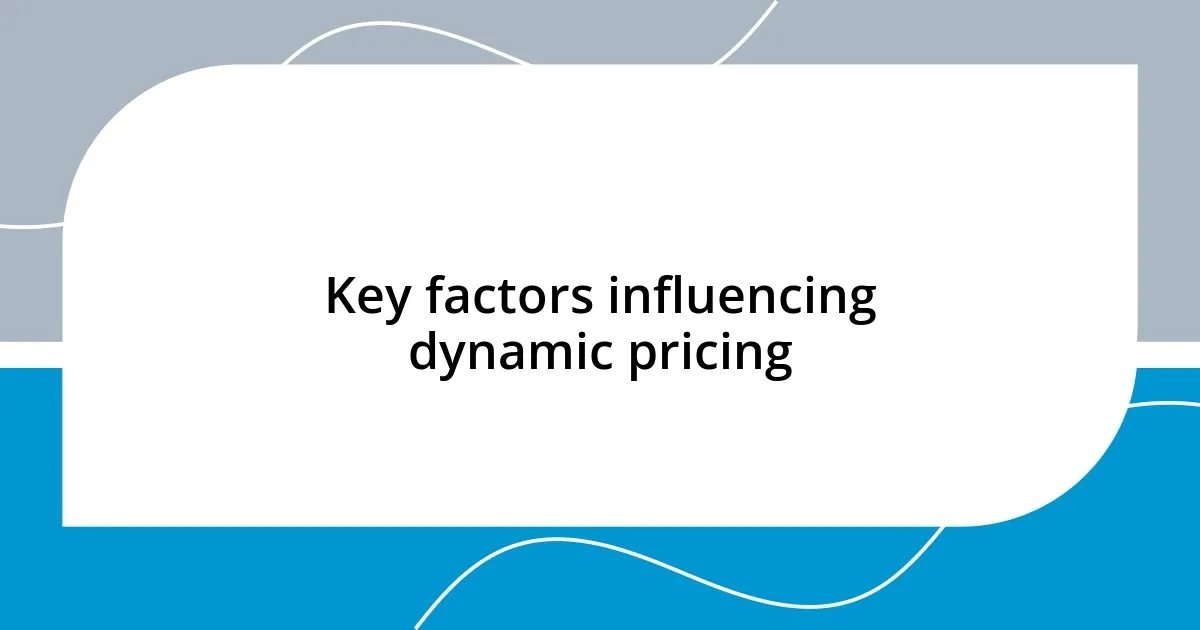
Key factors influencing dynamic pricing
Understanding the key factors that influence dynamic pricing is essential for grasping how this strategy works in real-world scenarios. From my experience observing market trends, demand elasticity plays a significant role. For example, during peak travel seasons, I often see prices soar, reflecting how willing people are to pay for limited resources like airline seats or hotel rooms. This creates an atmosphere of urgency that can lead to impulsive decisions.
Here are some key factors influencing dynamic pricing:
- Demand Fluctuations: Variations in customer demand based on time, season, or special events can cause rapid price adjustments.
- Competitor Pricing: Businesses keep a close eye on competitors and may shift their prices to remain attractive in the marketplace.
- Consumer Behavior: Data analytics helps predict how customers respond to price changes, allowing businesses to fine-tune their strategies accordingly.
- Inventory Levels: A limited supply will often lead to increased prices as sellers capitalize on scarcity.
- Market Trends: Broader market conditions, such as economic changes or emerging consumer trends, play a crucial role in pricing strategies.
Notably, I remember a recent experience while shopping online for concert tickets. The prices fluctuated based on how quickly tickets were selling out; I felt the pressure mounting. Every time I refreshed the page, the price ticked up, igniting a mix of excitement and anxiety in me. This reaction is typical; dynamic pricing not only affects businesses but significantly influences consumer emotions, prompting quick decisions driven by the fear of missing out. I realized then that understanding these factors could empower me to make more informed choices in my purchasing journey.
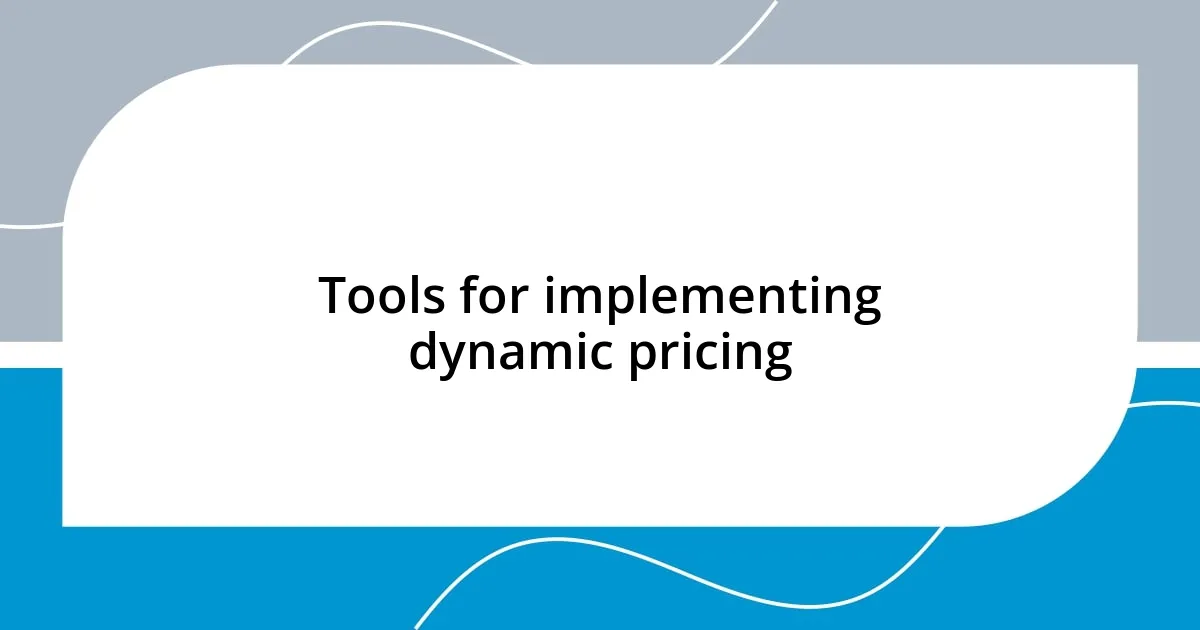
Tools for implementing dynamic pricing
When it comes to dynamic pricing, having the right tools is essential. For instance, I’ve come across software platforms like Price2Spy and Prisync, which allow businesses to monitor competitors’ pricing in real-time. This kind of insight can be a game-changer. I remember using a similar tool during a promotional campaign—it felt empowering to adjust my pricing structure based on competitor movements, ultimately enhancing our market position.
Another valuable resource is revenue management software, which uses algorithms to predict demand and optimize prices accordingly. For example, I once worked with a hotel chain that deployed such a system. The software analyzed booking patterns to suggest price adjustments based on projected occupancy rates. Seeing the difference it made in their revenue on busy weekends was incredibly rewarding. But it also raised the question—how do you balance optimizing for profitability while keeping customer loyalty intact?
Lastly, I can’t stress enough the importance of data analytics in this equation. With tools like Google Analytics or Tableau, businesses can gather insights about customer behavior and tailor their pricing strategies. Once, I consulted for a local restaurant that used analytics to observe peak dining times and adjust menu prices accordingly. Watching their profits grow while keeping patrons happy was a testament to how effective this tool can be. What tools have you considered for your pricing strategies?
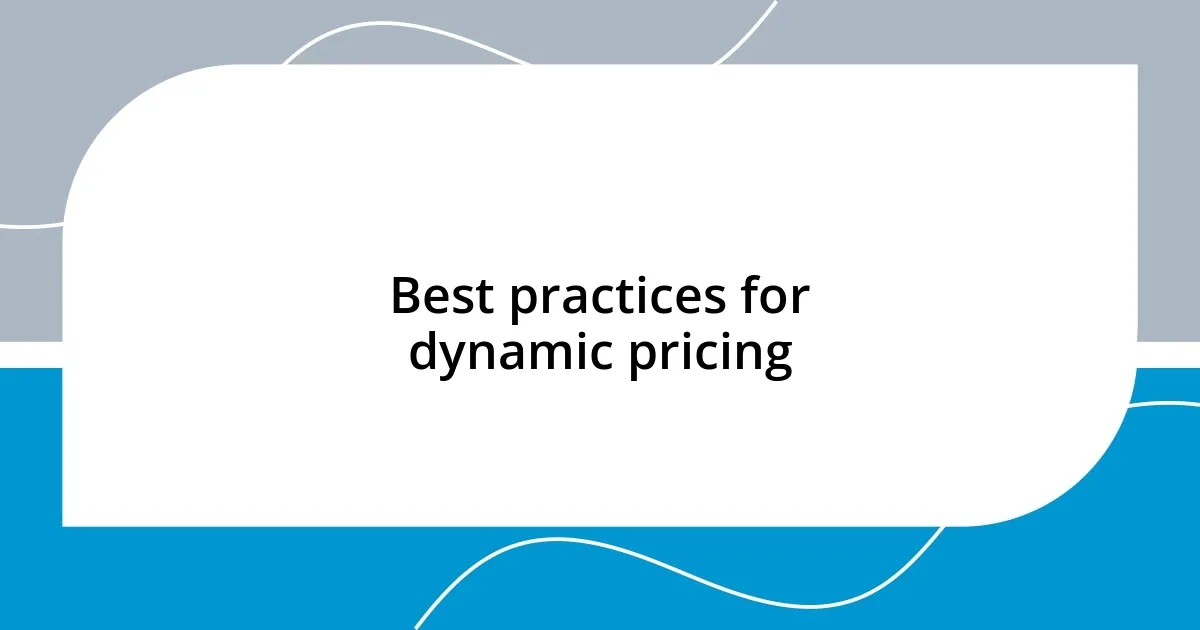
Best practices for dynamic pricing
One of the best practices I’ve learned in dynamic pricing revolves around transparency. When I was managing a small e-commerce store, I noticed that customers responded positively to pricing explanations during promotional events. By informing them about the rationale behind pricing changes—like limited time offers or seasonal adjustments—I built trust and a loyal customer base. How do you communicate pricing changes to your customers? It can make a significant difference in their perception of value.
Another vital aspect is to continuously monitor and analyze results. I remember an incident where we implemented a dynamic pricing strategy based on user engagement data. By assessing customer interactions with our site, we made timely adjustments that reflected demand fluctuations. It was an eye-opener for me; having a responsive approach can lead to higher conversions and customer satisfaction. Have you ever reflected on how your pricing strategy aligns with customer behavior?
Lastly, testing different strategies is key in finding the sweet spot. In one campaign, I varied prices based on the time of day for a product launch. The early-bird offers were a hit, encouraging early purchases, while evening price increases prompted last-minute buyers. I felt a thrill as sales spiked! Experimentation allows flexibility and the chance to discover unexpected trends. Are you open to testing different pricing strategies to see what resonates best with your audience?
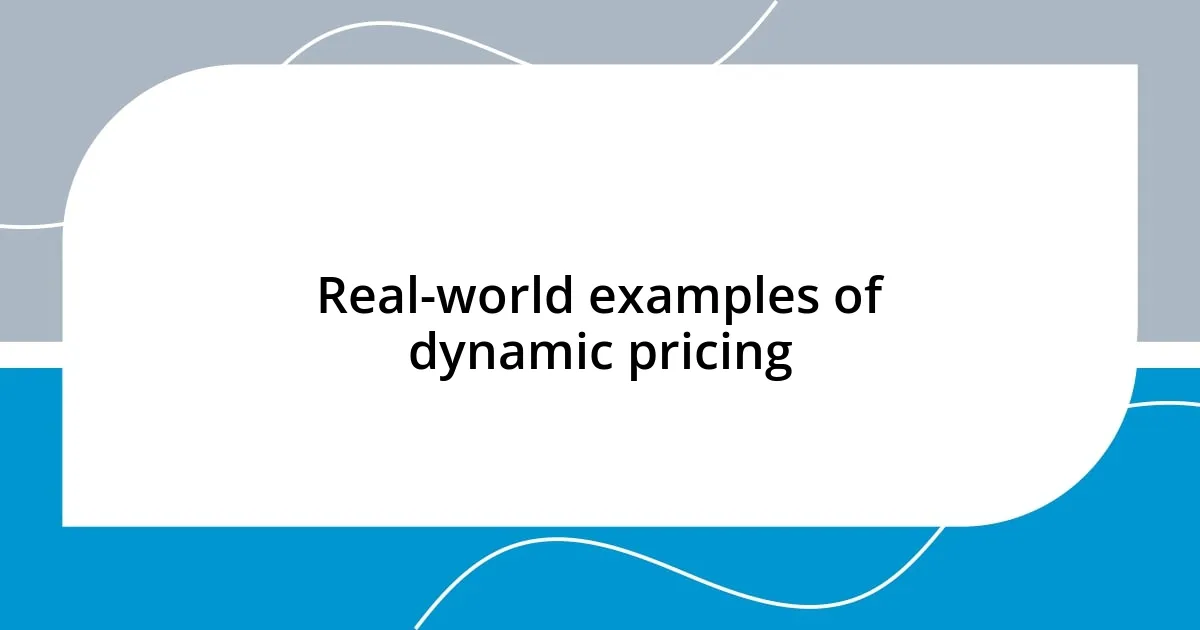
Real-world examples of dynamic pricing
Airlines are often the poster children for dynamic pricing in action. I remember booking a last-minute flight just a day before departure and being shocked at the price surge. It struck me how these companies use complex algorithms to reflect demand, factoring in everything from time of day to seasonality. Have you ever wondered why that same flight drops in price weeks before departure, only to skyrocket as you get closer? It’s all about supply and demand.
Another vivid example I experienced was with ride-sharing apps. Depending on the time of day or surge pricing during bad weather, I’ve often paid significantly more for a ride at peak hours. I recall one particularly rainy night when my usual trip was priced three times higher. It was frustrating, yet I understood the rationale—it’s a way to balance driver availability with passenger demand. Does that make you reconsider your transportation choices when the rain pours?
When I look at retail, dynamic pricing has become increasingly prevalent, especially during sales events like Black Friday. I vividly remember spotting a TV that dropped by 30% one evening, only to find it was back at its original price the next day. Understanding how retailers use this tactic to create urgency can be both exhilarating and nerve-wracking. Have you ever hesitated, unsure if you should buy immediately or wait for a potential better deal? That feeling of uncertainty is part of the consumer experience in this dynamic pricing world.











